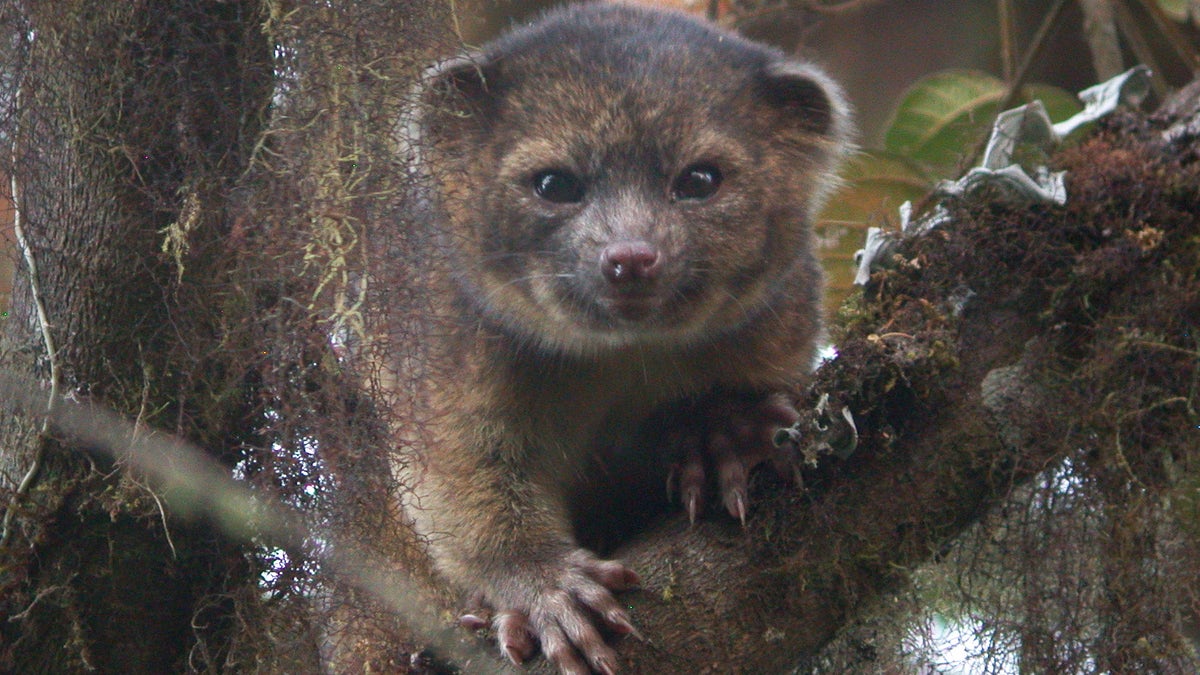
This undated handout photo provided by Mark Gurney shows a olinguito. Imagine a raccoon with a teddy bear face that is so cute it's hard to resist, let alone overlook. But somehow science did _ until now. Researchers Thursday announced a rare discovery of a new species of a mammal that belongs to the grouping of large creatures that include dogs, cats and bears: the olinguito. The raccoon-sized critters leap through the trees of the cloud forests of Ecuador and Colombia at night, according to a Smithsonian researcher who has spent the past decade tracking them. (AP Photo/Mark Gurney)
Researchers announced Thursday a rare discovery of a new mammal species called the olinguito. And its teddy bear face makes it instantly adorable.
The raccoon-sized critter leaps through the trees of mountainous forests of Ecuador and Colombia, but it shouldn't have been too hard to find — one of them lived in the Smithsonian-run National Zoo in the Washington for a year.
"It's been kind of hiding in plain sight for a long time" despite its extraordinary beauty, said Kristofer Helgen, the Smithsonian's curator of mammals.
The zoo's little critter, named Ringerl, was mistaken for a sister species, the olingo. Ringerl was shipped from zoo to zoo from 1967 to 1976: Louisville, Ky., Tucson, Ariz., Salt Lake City, Washington and New York City to try to get it to breed with other olingos.
It wouldn't.
"It turns out she wasn't fussy," Helgen said. "She wasn't the right species."
The discovery is described in a study in the journal ZooKey.
Helgen first figured olinguitos were different from olingos when he was looking at pelts and skeletons in a museum. He later led a team to South America in 2006.
"When we went to the field we found it in the very first night," said study co-author Roland Kays of the North Carolina Museum of Natural Sciences. "It was almost like it was waiting for us."
It's hard to figure how olingos and onlinguitos were confused for each other.
"How is it different? In almost every way that you can look at it," Helgen said.
Olinguitos are smaller, have shorter tails, a rounder face, tinier ears and darker bushier fur, he said.
"It looks kind of like a fuzzball ... kind of like a cross between a teddy bear and a house cat," Helgen said.
It eats fruit, weighs about 2 pounds and has one baby at a time. Helgen figures there are thousands of olinguitos in the mountainous forest, traveling through the trees at night so they are hard to see.
While new species are found regularly, usually they are tiny and not mammals, the warm-blooded advanced class of animals that have hair, live births and mammary glands in females.
Outside experts said this is not merely renaming something, but a genuine new species and a significant find, the type that hasn't happened for about 35 years.
"Most people believe there are no new species to discover, particularly of relatively large charismatic animals," said Case Western Reserve University anatomy professor Darin Croft. "This study demonstrates that this is clearly not the case."
Based on reporting by The Associated Press.
Follow us on twitter.com/foxnewslatino
Like us at facebook.com/foxnewslatino
